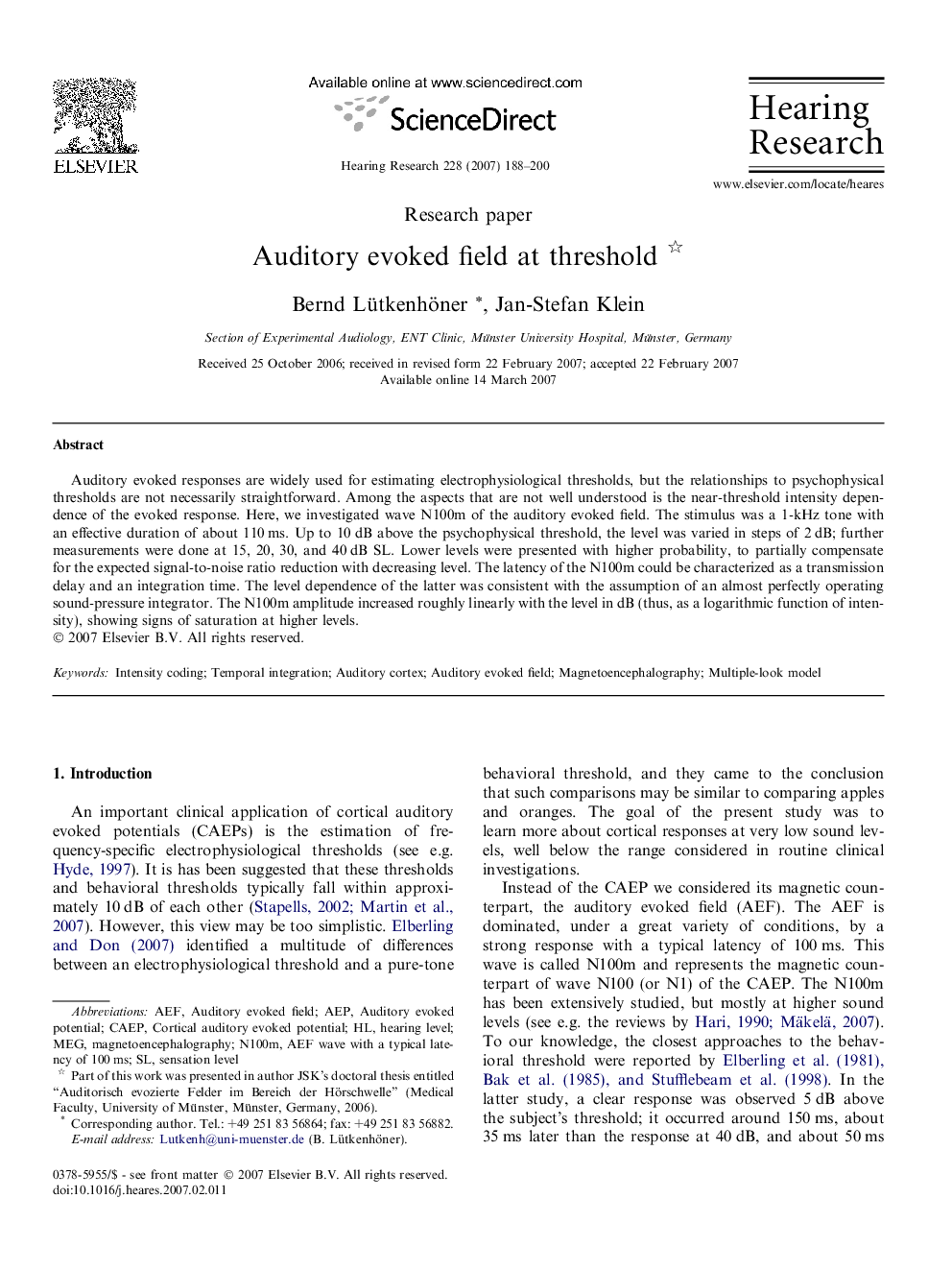| Article ID | Journal | Published Year | Pages | File Type |
|---|---|---|---|---|
| 4356234 | Hearing Research | 2007 | 13 Pages |
Auditory evoked responses are widely used for estimating electrophysiological thresholds, but the relationships to psychophysical thresholds are not necessarily straightforward. Among the aspects that are not well understood is the near-threshold intensity dependence of the evoked response. Here, we investigated wave N100m of the auditory evoked field. The stimulus was a 1-kHz tone with an effective duration of about 110 ms. Up to 10 dB above the psychophysical threshold, the level was varied in steps of 2 dB; further measurements were done at 15, 20, 30, and 40 dB SL. Lower levels were presented with higher probability, to partially compensate for the expected signal-to-noise ratio reduction with decreasing level. The latency of the N100m could be characterized as a transmission delay and an integration time. The level dependence of the latter was consistent with the assumption of an almost perfectly operating sound-pressure integrator. The N100m amplitude increased roughly linearly with the level in dB (thus, as a logarithmic function of intensity), showing signs of saturation at higher levels.
